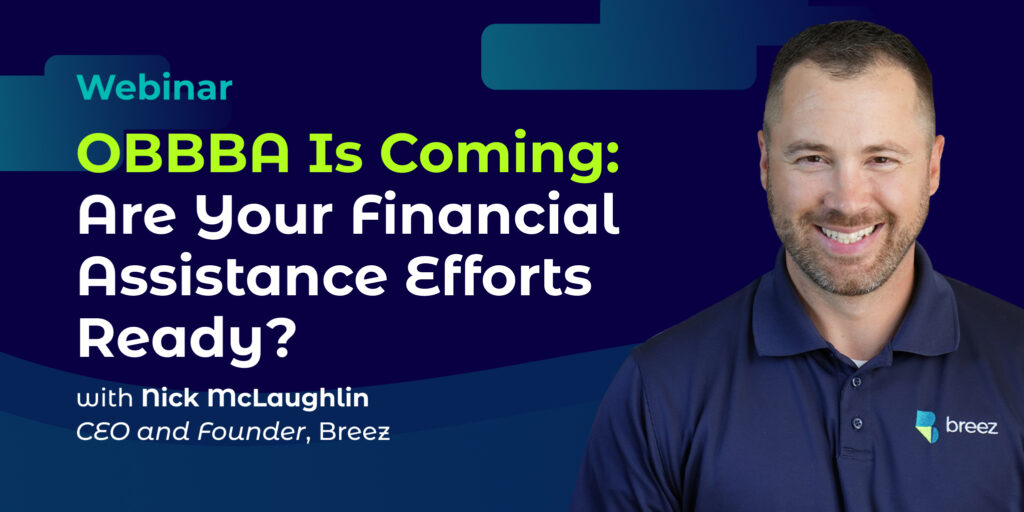Over the past ten years, we’ve seen unimaginable developments in cancer treatment, robotics, cardiology—and the list goes on. Nonprofit hospitals work tirelessly to get the most advanced technology and top specialists into their facilities, so they can better serve patients. We’ve also seen improvements in patient-centered care initiatives—with more and more nonprofits striving to become both Planetree- and Magnet-designated. During the COVID-19 pandemic, hospitals stepped up. Through our anxiety and fear, we found comfort knowing that if we needed them, they were there for us.
But there’s still an area that nonprofit hospitals haven’t yet perfected—financial assistance programs. Read on to learn why streamlined financial assistance programs should be the next big initiative for nonprofit hospitals in the U.S.
1. Many of your patients can’t afford their medical bills
More than half of U.S. adults say they’ve gone into debt in the past five years because of medical bills—Americans owed $140B in medical debt in 2020. And about one in five people, with any amount of debt, say they don’t expect to ever pay it off.1 One in three younger adults say they forgo healthcare entirely because of the expense.2 That’s a problem. By skipping healthcare services, younger patients are missing out on lifesaving preventative care, and hospitals are likely to treat sicker patients down the line.
How a Streamlined Financial Assistance Program helps: Streamlining financial assistance and charity screening, and making it self-serve and available online, will increase patient engagement among those who struggle to afford care. Many people think that only those experiencing homelessness or unemployment qualify for financial assistance, but that’s not the case. Digital technology is available where patients can anonymously check their financial situation and family size against their hospitals’ financial assistance eligibility criteria—making exploring financial options patient-friendly and seamless. If a patient qualifies, it means a lower cost to collect, less bad debt for the hospital, and a better financial experience for the patient.
2. Approving financial assistance for patients who can’t pay is financially beneficial for nonprofits.
Why send patients who cannot afford to pay to collections, when approving them for financial assistance results in federal and state reimbursement? The Centers for Medicare & Medicaid Services (CMS) reimburses Medicare Bad Debt $.65 on the dollar. If a Medicare patient has their Part A deductible of $1,556 approved for financial assistance, hospitals can forgo the rest of the billing cycle, not send them to collections, and receive $1,011 from CMS through Medicare Bad Debt reimbursement. And how much is an additional dollar of financial assistance worth on your IRS Worksheet S-10? Approximately $.21 on the dollar. So, if your average patient balance is $1,500, approving that patient for financial assistance, rather than sending them to collections, means an additional $315 in uncompensated care reimbursement.
How a Streamlined Financial Assistance Program helps: You will enroll far more patients in your Financial Assistance Program if you offer easy-to-use tools—where patients can access and navigate your financial assistance program on their own. If every approved application means revenue for your hospital, let’s invite (eligible) patients to apply for financial assistance online. These tools mean more patients engaged in your program, fewer patients in collections, more affordable access to care, and more reimbursement from third party payers.
3. Healthcare workers agree—prioritizing FAP/Charity Care is important.
After this year’s HFMA Annual Conference, I conducted a poll on LinkedIn: On a scale of 1 to 10, 10 being high, how important is it to get patients that qualify for FAP/Charity Care into a program? An overwhelming number of participants—experts in the industry—voted 10. Here’s what they had to say:
- “Historically, it’s been difficult to verify that a patient qualifies for charity care. It’s easier to just send an account to bad debt.”
- “I voted 10—it’s our responsibility as healthcare providers to ensure that pain and suffering is not extended into the payment of hospital bills.”
- “If we are responsible for the health of our patients and our community in general, making sure that those who cannot afford needed care must be part of our mission.”
4. “Working, insured people assume they don’t qualify.”
There’s no question that nonprofit hospitals in the U.S. care deeply for patients. But industry experts agree—hospitals can provide the best—most lifesaving—clinical experience for a patient, and if the patient financial experience falls short, they’ll still have a patient that’s suffering. A streamlined financial assistance program is critical to make sure the clinical and financial experience for a patient align well. It will not only help patients afford their medical bills, but it also leads to increased reimbursements for nonprofit hospitals.
Learn how Breez Health makes financial assistance easy—empowering hospitals to drive growth and deliver patient satisfaction.
About the author:
Nick McLaughlin is the Founder and CEO of Breez Health, a member of the Goodroot community of companies, dedicated to furthering the mission of delivering more accessible, patient-friendly financial assistance programs for hospitals across the US. With over 12 years of experience working in hospital billing and revenue cycle, Nick has a deep understanding of the challenges facing hospitals and their patients.



